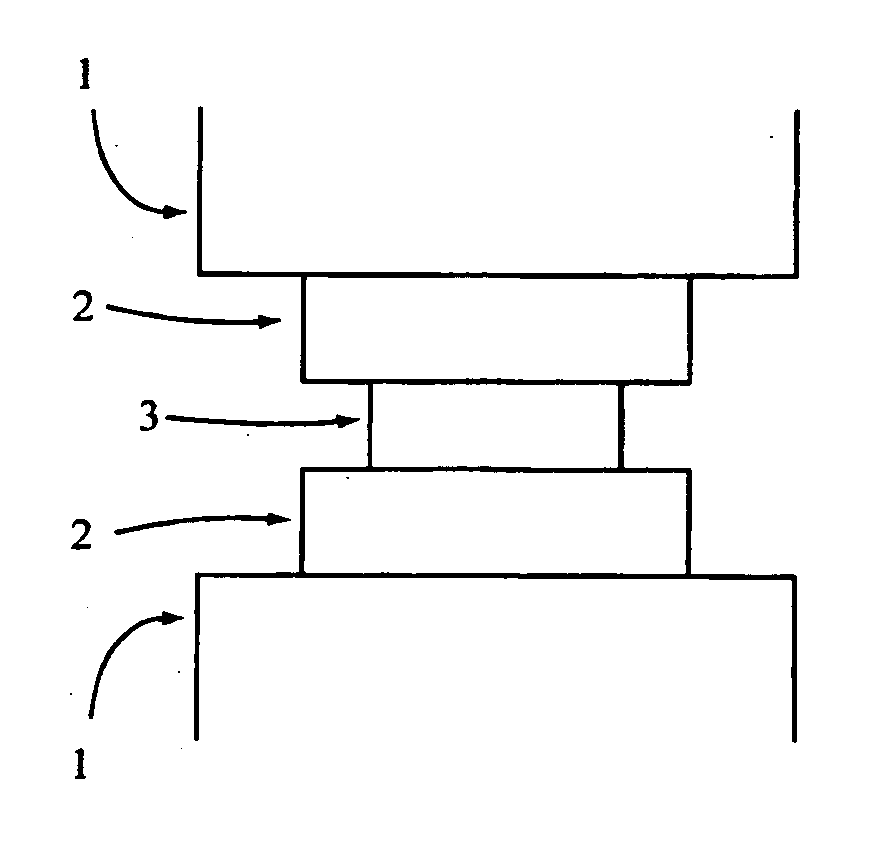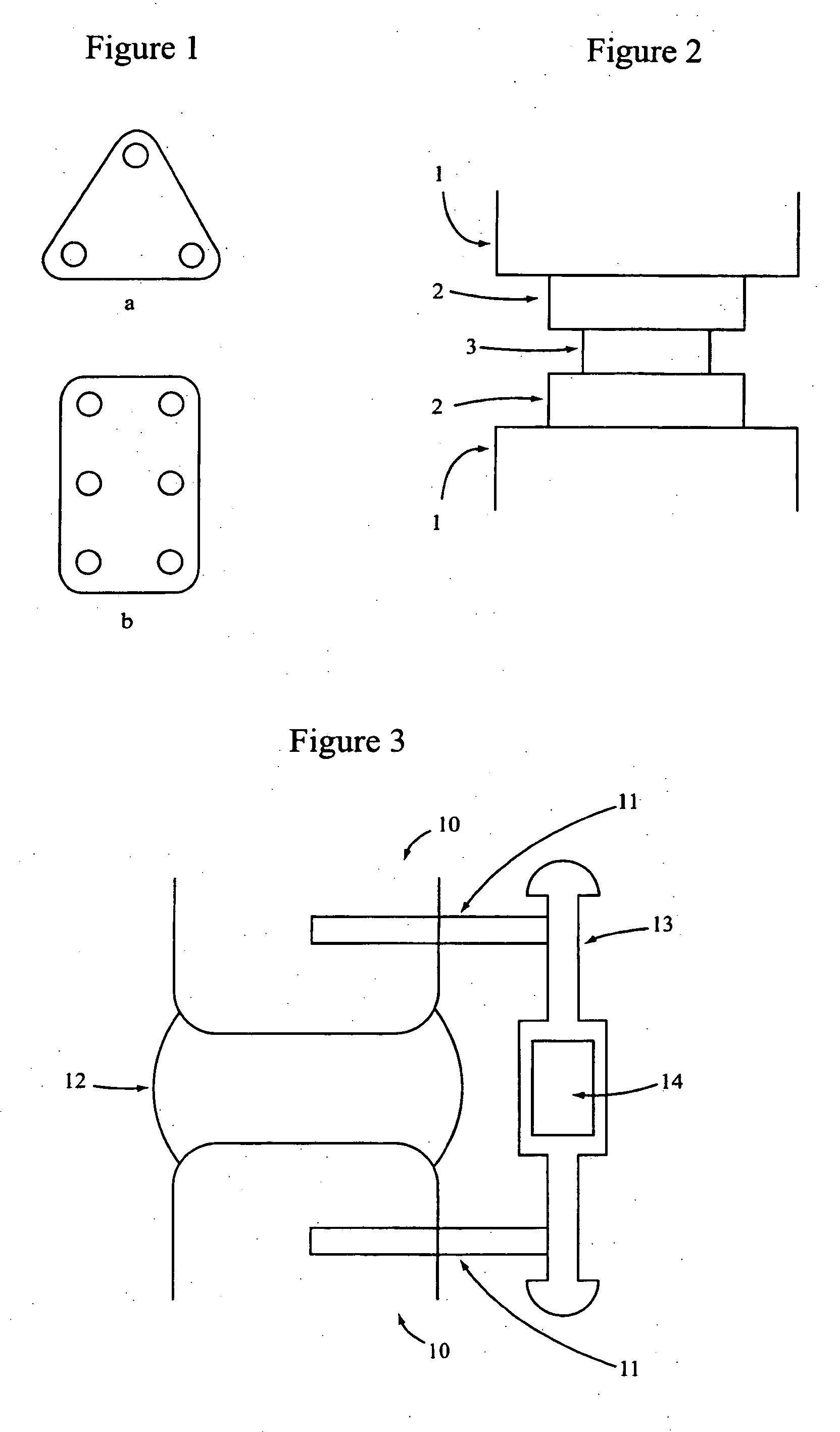Materials, devices and methods for implantation of transformable implants
a technology of implantable devices and materials, applied in the field of implantable devices, can solve the problems of abnormal degeneration of the disk, instability of a portion or all of the vertebral column, and use of rigid spinal fixation devices, and achieve the effects of improving the quality of the final produ
- Summary
- Abstract
- Description
- Claims
- Application Information
AI Technical Summary
Benefits of technology
Problems solved by technology
Method used
Image
Examples
example 1
[0078] A hollow rod comprised of high modulus polyethylene fibers (SPECTRA® fibers, commercially available from Honeywell International, Inc., Colonial Heights, Va.) was cut in half, and one half was stretched and inserted into the other half to form a two-layer composite rod. The composite rod of polyethylene fibers constitutes the primary phase or material and gelatin will constitute the secondary phase or material. The composite transformable rod was initially relatively flexible. Gelatin was injected into the composite rod until full, the ends of the hollow rod were tied off, excess gelatin wiped off, and the gelatin soaked composite rod was allowed to dry in ambient conditions. Upon drying, the rod was rigid. The rigid composite rod then was re-hydrated it in 37° C. water and the rod eventually became flexible. After a few minutes of re-hydration, the composite rod was still rigid, but as time passed, the composite rod slowly became flexible over a period of about one hour. Thi...
example 2
[0079] A transformable anterior tension band is created by casting a gelatin solution into a braided band of polyethylene fibers. The braided band of polyethylene fibers constitutes the primary phase or material and the gelatin solution constitutes the secondary phase or material. The transformable band is initially relatively flexible. Excess gelatin is removed from the surface of the band and the band is substantially dehydrated in a vacuum oven, by heating, or by other means. Upon substantial dehydration, the transformable band will become relatively rigid as the movement of the polyethylene fibers is restricted by the dried gelatin particles embedded in the fibers. During insertion into the body, the gelatin absorbs body fluids, thereby lubricating the outside surface of the transformable band and facilitating insertion. The transformable band is subsequently connected by anchoring means, for example staples or screws, to the vertebrae. By tensioning the vertebrae, stress shield...
example 3
[0080] A transformable intervertebral disc implant is created by casting a gelatin solution into a braided tether of polyethylene fibers. The braided band of polyethylene fibers constitutes the primary phase or material and the gelatin solution constitutes the secondary phase or material. Excess gelatin is removed from the surface of the tether and the tether is substantially dehydrated in a vacuum oven, by heating, or other means. Upon substantial dehydration, the transformable tether becomes relatively rigid as the movement of the polyethylene fiber is restricted by the xerogel particles embedded in the fibers. The tether is cut into short segments that are inserted, for example, by cannula into the disc or nucleus space. The gelatin is rehydrated by the body fluids in the disc or nucleus space and the transformable segments resume the relatively flexible state of the braided tether.
PUM
 Login to View More
Login to View More Abstract
Description
Claims
Application Information
 Login to View More
Login to View More - R&D
- Intellectual Property
- Life Sciences
- Materials
- Tech Scout
- Unparalleled Data Quality
- Higher Quality Content
- 60% Fewer Hallucinations
Browse by: Latest US Patents, China's latest patents, Technical Efficacy Thesaurus, Application Domain, Technology Topic, Popular Technical Reports.
© 2025 PatSnap. All rights reserved.Legal|Privacy policy|Modern Slavery Act Transparency Statement|Sitemap|About US| Contact US: help@patsnap.com



